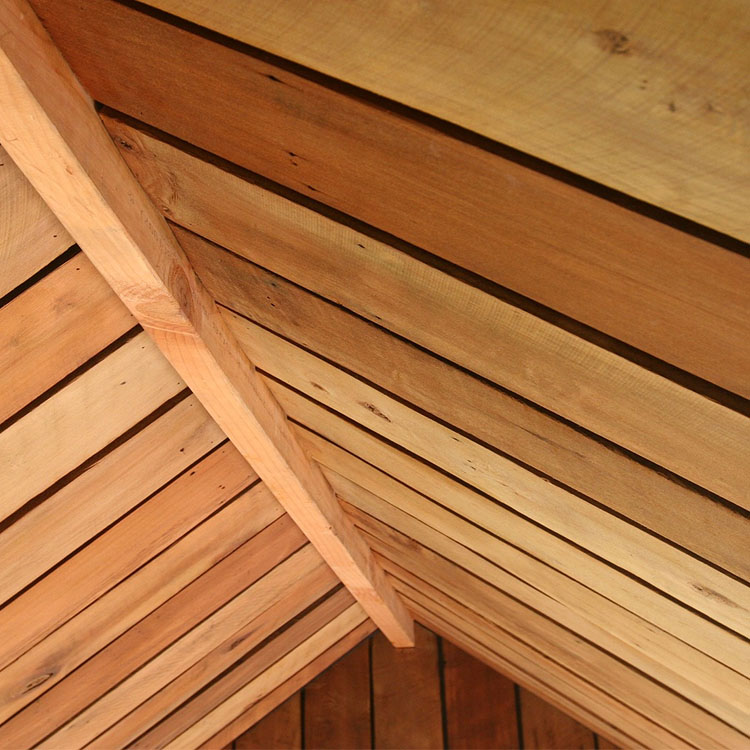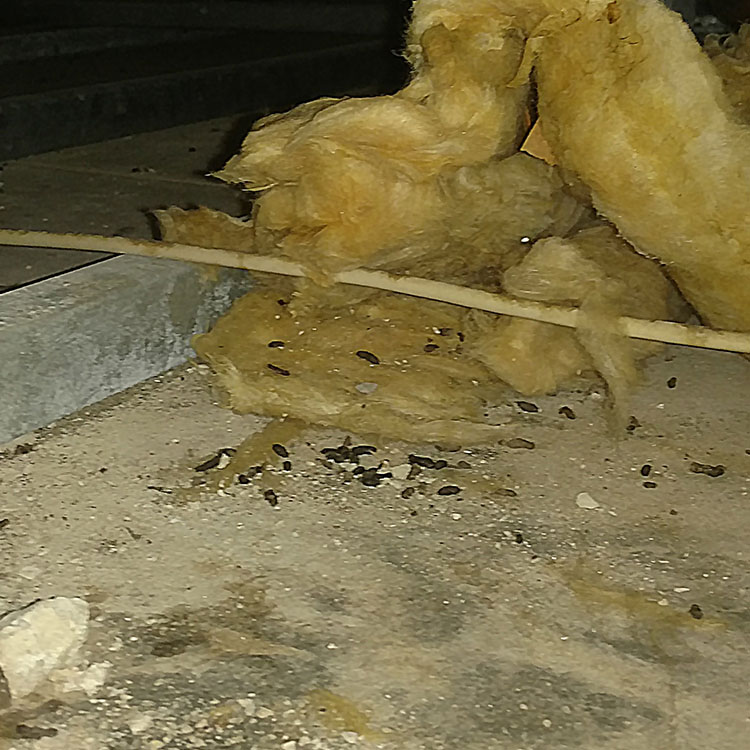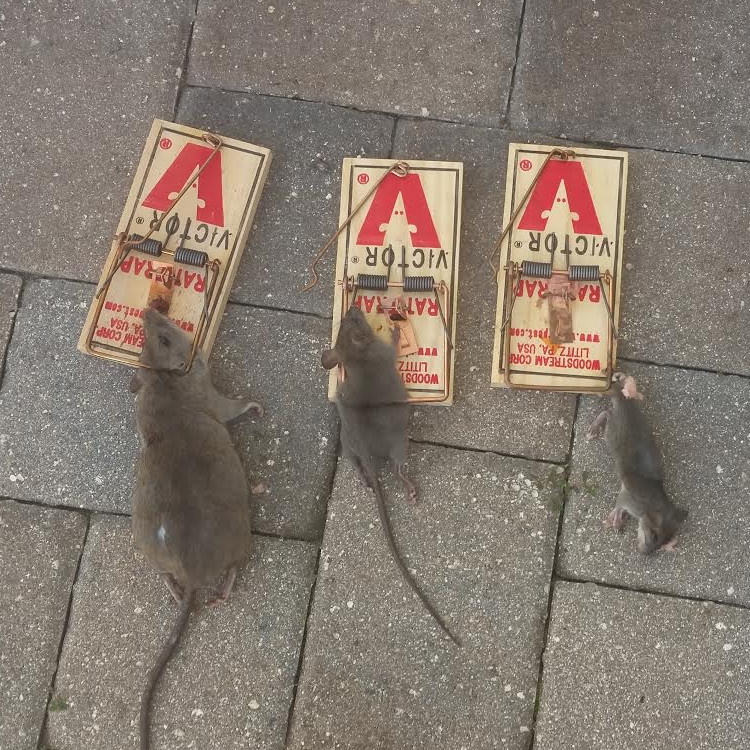Rats in the Attic
Rats are skilled climbers and will quickly find their way to the roof of your home along gutters, vinyl siding, or cable lines. Once there, they will squeeze between cracks in fascia board, crawl through holes in the soffit, or work their way up walls in order to make their nest in your cozy attic. Rats, when living in the attic of your home, will not be leaving the attic for anything but to feed. They will urinate, defecate, and breed in their new living space, and will require skilled trappers to be removed from the area.

Identifying the Presence of Rats in the Attic
Rats will be pretty stealthy for the most part. You may see one in the middle of the nigth if you switch the lights on in your kitchen, or find one swimming in your toilet bowl during the day time. Once you find their nesting area, you'll be able to smell the waste that they are producing. Rats live amongst their filth like most wildlife and will most likely leave dirty footprints behind them. Rats have been known to leave urine trails to guide them without light or site back to their nests and places where they can find food.
Feces and Urine from Rats and Insulation
Wildlife removal professionals deal with urine and feces soaked insulation nearly every day on the job. Almost every type of wildlife that invades your attic space is going to do some damage to your insulation, and it is always best to replace it immediately for the sake of your health and the health of people who visit your home.

Damaged Wiring
We speak many times in this article series about how destructive rats are, and how they don't have a preference regarding what they eat or chew. This leads them to do damage without any regard for their own life: chewing live electrical wiring. This results in many dead rats each year, and many a frustrated homeowner. There is nothing worse than trying to track down broken electrical wiring inside the walls of your home.
Damaged Ductwork
These terribly un-picky creatures will also raise the cost of your energy consumption in your home by making little rat-sized holes in your ductwork. Damaged ductwork will leak cool or warm air out into the attic instead of your home, causing your heating and cooling systems to work overtime to centralize the air inside your home. Not to mention the fact that any contaminants from rat feces, dust particles, and musty odors from the attic will now be exposed to the living spaces of your home.
Stains on the Ceiling
Stains on the ceiling of living spaces in your home are not always a sign of a water system leak in your home. Rat urine and feces can build up and soak all the way through insulation to create horrible, odorous stains on your textured ceilings. When this occurs, it is best to completely replace the paneling with fresh, unsoiled pieces to make sure that the area is completely sanitary. The same goes for the insulation that is resting on top of it.

Excluding and Trapping Attic Rats
After a good inspection, you are ready to exclude and trap your attic rats. Use a few traps for every rat that you believe is in the attic. Bait them with peanut butter or another type of food that won't cause an odor over a day or two's time. Seal up access points that could be used by new rats to enter the attic space. Check the traps once daily to prevent the attraction of flies or other animals by a dead rat carcass. Each rat should be wrapped in plastic sheeting and disposed of according to local standards.
